In today’s ever-changing business landscape, strengthening the contractor/wholesaler channel is critical to survival. A recent general session at PHCC CONNECT drilled deep into the conversation. “How does my supplier make me look like a rock star?” asked Dan Callies, President, Oak Creek Plumbing, Inc., Oak Creek, Wis., during the “Collaborative Connections: Strengthening Supplier-Contractor Relationships for Read more
Contractor

In today’s ever-changing business landscape, strengthening the contractor/wholesaler channel is critical to survival. A recent general session at PHCC CONNECT drilled deep into the conversation.
“How does my supplier make me look like a rock star?” asked Dan Callies, President, Oak Creek Plumbing, Inc., Oak Creek, Wis., during the “Collaborative Connections: Strengthening Supplier-Contractor Relationships for Success” general session at the PHCC Connect show last month in Cleveland. Joining Dan on stage was an all-star cast featuring emcee Robert Grim, Senior Vice President, Global Sales, InSinkErator, Mount Pleasant, Wis.; Scott Robertson, President, Robertson Heating Supply Co., Alliance, Ohio; Kathryn Poehling-Seymour, President and CEO, First Supply LLC, Madison, Wis.; and Jason Pritchard, Co-Founder, PriCor Technologies, Seattle.

From l to r: Robert Grim, Senior Vice President, Global Sales, InSinkErator, Mount Pleasant, Wis.; Scott Robertson, President, Robertson Heating Supply Co., Alliance, Ohio; Kathryn Poehling-Seymour, President and CEO, First Supply LLC, Madison, Wis.; and Jason Pritchard, Co-Founder, PriCor Technologies, Seattle.
That’s the million-dollar question, right? How does the supplier/contractor relationship make each other better at his/her jobs, and contribute to the overall company mission? Throw in the manufacturer here too, for that matter. Some of the fundamental tenets for strengthening that relationship—that were discussed at the general session—included collaboration, value distribution services, availability, technology and training, and expectations.
Can’t We Just Get Along?
InSinkErator’s Grim asked about the value of working together, and Poehling-Seymour stressed that collaboration is critical in this relationship. “We must understand the pain points and what is working and what isn’t.”
And with that comes better communication. “We are in a relationship industry where communication is imperative,” said Pritchard. If that means paying a bit more for that stronger relationship, then so be it, intimated Pritchard.
Callies echoed this but stressed right communication over more communication. The common thought is “wide equals pricing and deep equals relationships,” said Callies.
So, let’s go deep as an industry. When asked what the landscape is going to look like in five-to-10 years for the contractor/wholesaler/manufacturer, people, processes and services matter. Through trust and preferences, “Relationships are going to matter more,” said Pritchard.
What about expectations? “We want to be around for another 10-20 years,” said Robertson. “We want to see contractor loyalty in the channel,” continued Robertson. “And that means a loyalty to the wholesaler in your particular market.”
Stock Market
Let’s not avoid the 800-lb. gorilla in the room. With contractor loyalty, comes availability and pricing. For Robertson, inventory presence is critical so much so that Robertson Supply holds inventory for approximately 100-125 days. “Listen, we don’t make or install anything so we better be damn good at inventory management,” said Robertson.
Value distribution services ties right in here, “It’s about right product, right time, right price,” said Poehling-Seymour. “Be that added value family.”
Tech Relevant
It’s imperative for these brick-and-mortar supply houses to stay on top of the latest trends and technology. “The key to survival is to stay progressive and current,” said Robertson. Upon further self-reflection, “how do we make it easier to find product?” asked Robertson. “This includes being totally integrated with our contractor partners and researching and developing a technology that contractors will use.”
 Poehling-Seymour added that First Supply LLC institutes “customer councils” to continuously get a pulse of the customer. “We try to make sense of the noise,” said Poehling- Seymour. “Where is critical mass in that noise so we can make the right decisions?”
Poehling-Seymour added that First Supply LLC institutes “customer councils” to continuously get a pulse of the customer. “We try to make sense of the noise,” said Poehling- Seymour. “Where is critical mass in that noise so we can make the right decisions?”
Unless you’ve been riding under a technology rock, Artificial Intelligence (AI) has dominated the talk in most every corner of the tech universe, and it has crept into the PHVAC industry as well. While artificial intelligence, in and of itself, can sound scary and intimidating, according to Poehling-Seymour, “AI has real application in the industry purchasing and predictability.”
For suppliers, it’s imperative to keep all “moving-forward” options available, as Robertson suggests. This includes, and nothing new and earth shattering in our industry, maximizing e-commerce when necessary. “E-commerce presents the right tools at your fingertips,” said Poehling-Seymour. Robertson adds that for his company, online ordering represents 20% volume. Other tech advancements, which included the use of QR codes to streamline processes and online training, were mentioned.
Training Room
InSinkErator’s Grim offered that in today’s business landscape, there is more need for training.
In fact, says Grim, PHCC members ask for training and education now more than ever. “With evolution and advancement comes training and education,” said Callies. Doubling down on this, Poehling-Seymour stated that First Supply opened a training center and offers a variety of training through streaming content.
Callies suggests that people still are the cogs in the wheel that makes this industry run, “Digital when you can, verbal when you must.” Pritchard and Poehler-Seymour agree, saying that people and the process are key through direct communication, and that includes all members of the channel—contractors, manufacturers, all the way down to the inside and outside sales, drivers, dispatchers, etc. within each organization.
So, let’s go back to the original question: How do we all make each other look like rock stars? Consuming all of the above, and, quite simply, “look for successes and build on them,” said Callies.
This article originally ran in PHCC’s Solutions magazine. You can learn more about the Plumbing-Heating-Cooling-Contractors (PHCC) Association at www.phccweb.org.

Keep your technical knowledge close in the tool bag; emotional intelligence is a highly valued personal trait that can help you run a more successful business. We’ve all heard the expression before, “You’re thinking with you heart and not your head.” But what if both were true? On a recent Thursday night Plumbing Perspective (@plumbing_perspective) Instagram Read more
Keep your technical knowledge close in the tool bag; emotional intelligence is a highly valued personal trait that can help you run a more successful business.
 We’ve all heard the expression before, “You’re thinking with you heart and not your head.” But what if both were true? On a recent Thursday night Plumbing Perspective (@plumbing_perspective) Instagram Live, guest Shreya Nagwani (@_shreymvp), sales/service expert and coach for Service MVP, discussed an interesting aspect of Service MVP’s training that translates to running a successful business. It’s called Emotional Intelligence or EQ. Almost counterintuitive—because of the opposite nature of how people can think one way and act another—the term actually makes an abundant amount of sense.
We’ve all heard the expression before, “You’re thinking with you heart and not your head.” But what if both were true? On a recent Thursday night Plumbing Perspective (@plumbing_perspective) Instagram Live, guest Shreya Nagwani (@_shreymvp), sales/service expert and coach for Service MVP, discussed an interesting aspect of Service MVP’s training that translates to running a successful business. It’s called Emotional Intelligence or EQ. Almost counterintuitive—because of the opposite nature of how people can think one way and act another—the term actually makes an abundant amount of sense.
According to Harvard Business School, Emotional intelligence is defined as the ability to understand and manage your own emotions, as well as recognize and influence the emotions of those around you. The term was first coined in 1990 by researchers John Mayer and Peter Salovey, but was later popularized by psychologist Daniel Goleman. (Goleman lists five components of EQ below.)
In the realm of home service sales, emotional intelligence (EQ) often takes a backseat to technical expertise. However, it is a critical component that should not be overlooked. EQ refers to the ability to understand and manage emotions effectively, enabling individuals to relieve stress, communicate well, empathize, overcome challenges, and defuse conflicts. In the sales process, where emotions heavily influence buying decisions, focusing on logical reasoning alone can leave clients hesitant.
But how does it translate into plumbing and HVAC business? While plumbing and HVAC techs have a high IQ, and what they communicate is overly technical, a non-technician, i.e., customer, doesn’t understand what that means, says Nagwani. “All they want is safety, comfort and health for their family and their home.”
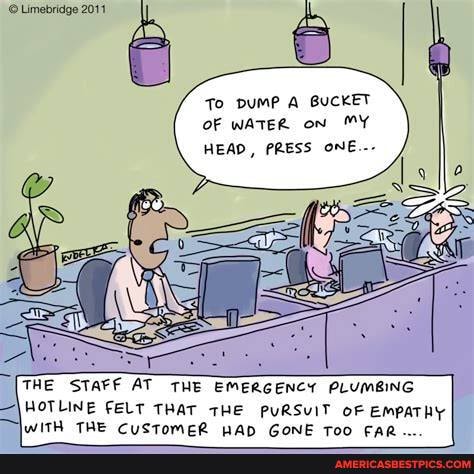 Home service technicians, typically analytical and left-brained, tend to prioritize the logical aspects of their work, inadvertently neglecting the emotional side of the sales process. The gap lies in the lack of training on communicating solutions in an emotionally intelligent manner. To successfully bridge this gap, technicians must be equipped with the skills to connect with customers on a deeper level, understand their unique needs, and present solutions that resonate emotionally.
Home service technicians, typically analytical and left-brained, tend to prioritize the logical aspects of their work, inadvertently neglecting the emotional side of the sales process. The gap lies in the lack of training on communicating solutions in an emotionally intelligent manner. To successfully bridge this gap, technicians must be equipped with the skills to connect with customers on a deeper level, understand their unique needs, and present solutions that resonate emotionally.
“It’s a very emotional job,” says Nagwani, but there is a gap. “To bridge the gap would be learning emotional intelligence. How do I communicate this job, which is just a plumbing job, to something like, ‘What is the effect of this system for their family? If they have chlorine in their water and their son has eczema.’ That’s how you connect emotional intelligence to a plumbing job,” says Nagwani.
And, not only that, people buy things when they have high self-esteem, when they feel like they deserve it. “People who have a high self-esteem buy premium,” says Nagwani.
How do to techs learn how to communicate that? “What we teach—in part—in our Service MVP offerings is, how do you raise someone’s self-esteem during a visit that by the end of the appointment the client feels better about themselves as a person? What happens is they’ll pick an option,” says Nagwani. “‘I deserve endless hot water,’ for example, connecting a technician’s job over to emotional intelligence.”
Moreover, sometimes it can be difficult exude confidence, stability, empathy on a tremendously busy schedule. “It’s confidence. Even if it’s not a lack of confidence, it comes off that way. This also goes to managers and owners. If your’re giving your guys six or seven calls on the board, they would see all of the calls stacked up and it would really affect the way they ran those calls and they would burn through all of them. They are just thinking of getting in and out. That is going to affect the service to the client, the job, the revenue and the happiness of the technician.
“We have a rule where a technician can see only one call at a time and they get a long time on that call. They have all the time they need; it’s quality over quanitity. What starts to happen is, there are less upset clients, there are more 5-star reviews, they triple their revenue, literally. The confidence of the technician is really important. How is somebody going to be confident when they don’t have communications training?” says Nagwani.
By incorporating emotionally intelligent communication techniques, technicians can establish a stronger connection with customers. Understanding and addressing customers’ emotions not only builds rapport but also allows for customized solutions that meet their specific needs. Training programs, such as those offered by Service MVP, specialize in teaching teams to utilize emotionally intelligent approaches. Implementing these techniques can lead to a significant increase in revenue per technician, averaging at 297%. This approach enhances customer satisfaction, improves conversion rates, and fosters long-term customer loyalty.
Goleman’s 5 Components of EQ
- Self-Awareness: Recognizing and understanding your own strengths and weaknesses, your emotions and moods, and the effects these things have on other people. A self-aware person is not easily offended by criticism, but rather learns and adapts.
- Self-Regulation: To think before doing and to express your feelings maturely with restraint. Rather than being controlled by emotions and impulses, an emotionally intelligent person can control impulses and emotional responses.
- Internal Motivation: High EQ people are self-motivated, pursuing personal goals for reasons of self-development and self-gratification, rather than money, titles, external praise or esteem.
- Empathy: Empathy involves recognizing, understanding and feeling the emotions of others. Unlike sympathy, empathy involves actually sharing the emotional experience another person is having. Empathetic people genuinely understand and respond to the needs of others.
- People Skills: Emotionally intelligent people easily build trust and respect with others. They are good at managing relationships and building networks, and they avoid power struggles and deceitfulness. Their high levels of the first four components of EQ make for deep bonds and genuine, non-competitive friendships.
Source: Forbes.com
Service MVP is an e-learning website featuring video-based micro-learning content designed to revolutionize your office, service, sales and install teams. It is the ultimate service sales training resource, where high performers increase the value of their solutions to create higher revenue and profit.

No job is too big or too small for trade contractor support. Whether you need help with a quick repair or a complex installation, there are plenty of experts out there who can lend a hand. The key is knowing where to look and how to ask for help. You know when you’re in the Read more
No job is too big or too small for trade contractor support. Whether you need help with a quick repair or a complex installation, there are plenty of experts out there who can lend a hand. The key is knowing where to look and how to ask for help.
You know when you’re in the middle of the job and you realize that there’s more to it than you thought. Or an issue comes up and you need another person in the trades to step in and support you to get it done. In this blog post, we’ll give you some tips on getting expert support when you’re on the job.
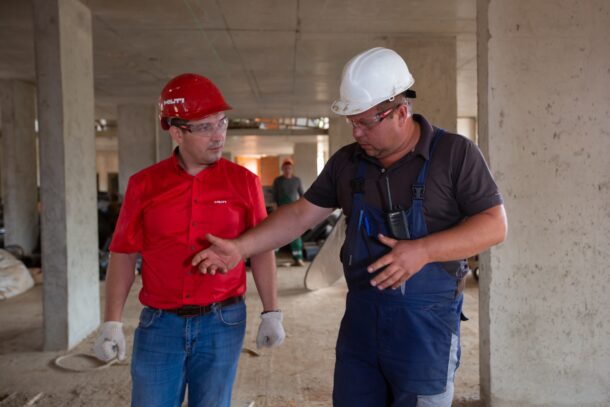
Before You Start the Job
The first step is to do your research. If you know what type of help you need, start by looking for businesses or individuals who specialize in that area. For example, if you’re a plumber who needs help with an irrigation project, you’ll want to find an expert in that field. Once you’ve compiled a list of potential options, take some time to read reviews and compare pricing. This will help you narrow down your choices and find the best option for your needs.
Another important consideration is your timeline. If you have a tight deadline, make sure to communicate that to the expert you’re working with. If you need to get out mobile welding services then you’ll want to arrange that ahead of time to support your job. This will help them plan their work accordingly and ensure that they’re available when you need them.
Asking for Help
Once you’ve found the right expert for the job, it’s time to reach out and ask for help. The best way to do this is by being specific about what you need assistance with. When possible, include as much information as possible so the expert can give you an accurate quote.
It’s also important to be clear about your budget. This will help the expert determine whether they’re able to take on your project within your specified price range. If not, they may be able to suggest alternative solutions that fit within your budget.
How to Find the Right Person
No matter how experienced you are, there are always going to be times when you need a little help on the job. Whether it’s a tricky installation or a last-minute change order, it’s important to know where to turn for expert support. Here are four places you can go for help when you’re on the job.
1. The Internet
Whether you’re looking for installation tips or troubleshooting advice, chances are good that you’ll find what you’re looking for online. There are plenty of forums and chat rooms where trade professionals can ask questions and get answers from their peers. In addition, many manufacturers and suppliers offer online support services.
2. Trade Associations
If you’re having trouble finding the information you need online, your next best bet is to contact a trade association. These organizations represent professionals in all sorts of trades, and they can often provide members with access to experts who can offer advice and answer questions.
3. Local Suppliers
When all else fails, your local supplier is always a great resource for expert support. These businesses depend on repeat customers, so they’re usually more than happy to help out with installation issues or other problems you might be having. In addition, many suppliers offer training courses on the products they sell.
4. The Manufacturer
If you’re still struggling to find the answers you need, your last resort is to contact the manufacturer directly. Many manufacturers have customer service representatives who are familiar with their products and can offer helpful advice. You may also be able to find helpful information on the manufacturer’s website.
Calling in the Experts
Getting expert support on your next job doesn’t have to be difficult—just follow these tips! With a little research and planning, you can find the perfect individual or business to lend a hand with even the most complex projects. So don’t wait—get started today and rest easy knowing that you have the support you need to get the job done right.
No matter what kind of problem you’re having on the job, there’s an expert out there who can help you solve it. By turning to the internet, trade associations, local suppliers, or the manufacturer, you should be able to get the answers and information you need to get the job done right.
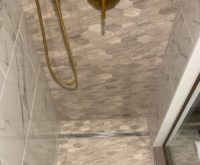
General contractor Turner Construction uses QuickDrain USA’s ShowerLine linear drain with adaptable pre-sloped PET shower pans to convert old cast iron tubs to modern walk-in showers, reducing installation time and labor costs. The 5-star Four Seasons Houston hotel is only steps away from Minute Maid Park, home of Major League Baseball’s Houston Astros, making it Read more
General contractor Turner Construction uses QuickDrain USA’s ShowerLine linear drain with adaptable pre-sloped PET shower pans to convert old cast iron tubs to modern walk-in showers, reducing installation time and labor costs.
The 5-star Four Seasons Houston hotel is only steps away from Minute Maid Park, home of Major League Baseball’s Houston Astros, making it a favorite of out-of-town fans who come to see their favorite team in action. Opened in 1982, the Four Seasons Houston is now in the latter stages of upgrading 404 guest bathrooms to transform the iconic downtown hotel, as part of a multi-year renovation project.
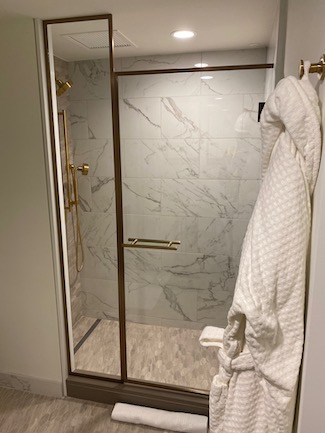 The bathroom renovations involve converting 40-year-old cast iron tubs to modern showers. According to project assistant-superintendent, John Upshaw of Turner Construction, converting 404 bathtubs to step-in showers in a building constructed in the ’80s, is no small feat.
The bathroom renovations involve converting 40-year-old cast iron tubs to modern showers. According to project assistant-superintendent, John Upshaw of Turner Construction, converting 404 bathtubs to step-in showers in a building constructed in the ’80s, is no small feat.
The construction team has encountered numerous job-site irregularities, with some bathrooms having more than one layer of drywall in the shower enclosure, altering the dimensions of the enclosure. Meanwhile, other bathrooms were missing cement boards, resulting in damage behind the walls.
“When we demo out a tub, we’re essentially running into different conditions in 404 different bathrooms,” Upshaw explains. “You just don’t know what you’re going to run into.”
So the team had to find a solution that would allow them to adapt to unexpected plumbing rough-in configurations and various shower-enclosure sizes. A product that would speed installation would be the ultimate find for a large project like this one.
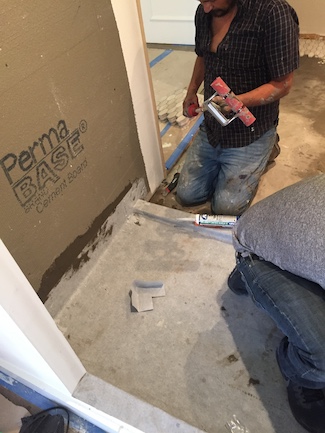 Which is exactly what the hotel’s architecture and design firm expected to accomplish when they specified QuickDrain USA’s tub-to-shower conversion kits for the project.
Which is exactly what the hotel’s architecture and design firm expected to accomplish when they specified QuickDrain USA’s tub-to-shower conversion kits for the project.
QuickDrain’s tub-to-shower conversion kits include an integrated PVC drain body, combined with a pre-sloped PET shower pan and waterproofing sheet membrane.
ShowerLine, used for the Four Seasons Houston project, is a high-quality PVC linear drain system and features a fully sloped trough where water exits through either a vertical or a side waste outlet. Installers can select from among six decorative drain-cover designs to accent the overall design scheme of any bathroom. In this case, the drain cover “Lines” was deemed the best fit.
Plumber Larry Adams, from Kilgore Industries in Houston, says he highly recommends the QuickDrain linear drain system because it’s easy to install and provides flexibility for the drain installation. Adams was the foreman apprentice during the original construction of the building in the 1980s.
 Core drilling impossible: “These are old cast iron tubs, so the drains were set at different positions and often off-center,” explains Adams. But jack-hammering or core-drilling through the concrete to adjust drain positioning wasn’t an option. Since the hotel is constructed via post-tensioned slabs, core-drilling would compromise the building’s integrity.
Core drilling impossible: “These are old cast iron tubs, so the drains were set at different positions and often off-center,” explains Adams. But jack-hammering or core-drilling through the concrete to adjust drain positioning wasn’t an option. Since the hotel is constructed via post-tensioned slabs, core-drilling would compromise the building’s integrity.
To allow enough room for Adams to stub out the existing DWV (drain, waste and vent) lines, which are made of copper, Turner Construction had to chip out the concrete surrounding the existing pipe. “We had a scanning company come out to determine where the rebar was in the slab,” explains Turner’s Upshaw. “Fortunately, we were able to find a location between the rebar to chip a small area around the drain.”
In addition, there was no way to solder the existing copper pipe to a new copper joint because of jagged pieces of metal coming through the concrete and less than half a hand space. Adams had to use a mechanical fastening coupling between the copper and the transition material. Thanks to the PET shower pans’ flexibility, the construction crew was able to cut the drain support panel in half to allow Adams to make the mechanical connection.
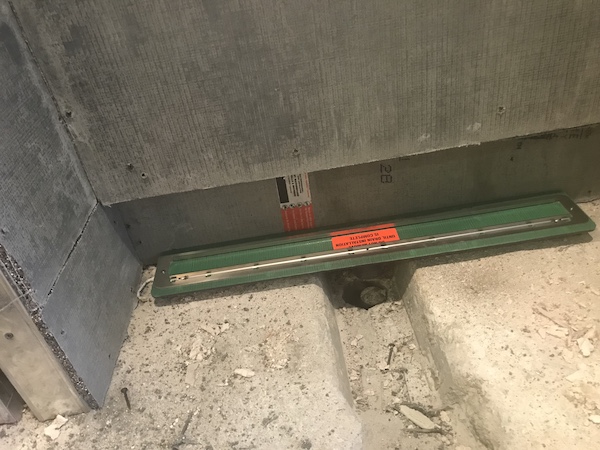
Made of extruded rigid PET (polyethylene terephthalate) plastic foam, QuickDrain’s pre-sloped shower panels can be easily cut and pieced together without costly customization, eliminating the time and labor to float the typical pitched concrete shower base.
“The flexibility of the PET pan is a big advantage,” says Upshaw, “especially given the irregularities we run into after removing the tubs.”
Furthermore, the QuickDrain system eliminates the need to knock down and reframe walls. According to Upshaw, the fact that they can cut the PET pans on-site to adjust to practically any condition, saves much needed time and labor costs for a renovation project of this magnitude.
Model-room training critical: QuickDrain conducted on-site, model-room training before the start of the project, performing a full installation to support Turner and Kilgore, as well as tile subcontractor Gulf Coast Flooring, also based in Houston. The training was essential because it provided the tile-setting crew with a solid grasp of how the QuickDrain system works.
“Gulf Coast Flooring is installing the PET pans and tile in all of the bathrooms,” says Upshaw, “so they had to fully understand the process.”
Upshaw believes Kilgore benefited the most from the training because they were able to determine which tools they would need to perform the job. “We were able to knock out any kinks and learn our lessons on what we can do better,” he says. “After that training, Kilgore hit the ground running.”
Tile contractor Jaime Rosa, of Gulf Coast Flooring, says each crew member completes an average five showers per day at the Four Seasons Houston project. “It takes less time than a conventional mud bed, and that translates into cost-savings for us and the hotel.”
Turner’s Upshaw adds: “The finished installation looks great, and as long as it looks good, the hotel is happy.”
Upshaw says he likes the QuickDrain system. “I’ve actually been thinking of putting it in my own home, and we will use it again for similar commercial projects.”

As the HVAC industry evolves further in response to new market opportunities, sustainability initiatives and changing consumer demands it’s easy to be left at a loss of how to cut through the marketing speak and deliver benefit-driven information to your customers. Putting in the extra work to fully understand how to translate product features into Read more
As the HVAC industry evolves further in response to new market opportunities, sustainability initiatives and changing consumer demands it’s easy to be left at a loss of how to cut through the marketing speak and deliver benefit-driven information to your customers. Putting in the extra work to fully understand how to translate product features into real-world customer benefits will give you an edge in the market. Below is a discussion on how to navigate an industry of new and old considerations across customer demographics. Follow along to understand how you can shift your strategies to build customer relationships through simple communication training of your sales staff.
Define your competitive edge through no-nonsense delivery
Is it just me, or does every HVAC product on the market have the same features?
Tell me if you’ve heard this one before: “Our new, highly-efficient product provides homeowners with a simple, flexible, and cost-competitive solution.”
Does this sound like a product line you offer? Truth be told, this description could apply to any number of products. For example, a system that offers “zoning” could be anything from a sophisticated ductless system to a simple air conditioner with manual air dampers.
Here’s the problem: today’s customers are the most educated customer base we’ve ever experienced. With access to information at our literal fingertips in our smartphones, customers can fact-check a sales pitch in an instant. HVAC repair and replacement is an expensive investment for most customers to begin with, so it’s understood that they want to know exactly what they’re paying for.
If you state that a product is efficient, customers want to know: How efficient and what are the benefits? Compared to what? Does it cost more, if so, what’s the price difference? Do I really need it?
If you’re not being clear with your customers, you can trust that they are getting their information elsewhere — perhaps even pulling purchase decision information from your competition.
There are simple improvements to your sales information delivery that can help to move past the jargon and build meaningful conversations with your customers that leave them feeling well-informed and satisfied in their decision. In short, you can build credibility – and become the authority – by being honest and transparent.
As mentioned, using vague terms to describe a product as efficient, variable, or flexible tells the customer very little. The way to fix this is to always speak in terms of comparison. By speaking in comparisons, you will educate the customer on all of the options available to them – not just the one you’d like to sell. This is a critical step in achieving value in customer satisfaction.
If you’re not comfortable speaking in comparison, here are three ways to help get you started:
- Stop talking features & benefits and start talking sell points and personas
If you’re speaking to a customer about a solution they are just one step away in the sales funnel from making a purchase. It’s important at this stage that you carefully consider what you say and how you say it.
Consider this: most brochures you’ll hand a customer have a long list of features & benefits… those features are often phrased in comparison to an older version of that same product or directly to a competitor’s product – “Even quieter!” or “More flexible than ever!”
But the homeowner doesn’t care if it’s “even quieter” than a previous generation of a product that isn’t in the consideration set they are making for their home. Focus on the information your homeowner actually wants and needs: what options do you recommend; what specifically makes you recommend these based on my needs; how much does it cost?
Hone in on information by defining the sell points for all the products in your portfolio. An easy way to do this is to determine the five whys for each of your products:
- Who would most want or need to purchase this product?
- What type of situation is this product most suitable for?
- Why would they need this product?
- When can we promise to deliver this product to the customer?
- Where are most of the customers geographically located who need this product?
Notice the emphasis on the extremes in these questions. The goal is not to answer in general – “who could use or purchase this product” – but rather “who MOST wants or needs this product and why.” This is critical to defining the true selling points of a product.
By taking this approach, your team will be able clearly to describe the important reasons behind a recommendation because they have clear guidance as to why to recommend it in the first place. You might even consider building a questionnaire that will help both you and your customer come to a decision on the right choice for them.
- Group your product offerings using tiers
Instead of confusing customers with an onslaught of product brochures covered in brand names, shiny logos, and pretty pictures, consider packaging your products into tiers. Most homeowners are able to easily pick up the concept of Good, Better, and Best – or Bronze, Silver, and Gold.
By grouping your offering into rungs on a ladder, you’re giving the customer a baseline to compare products against one another. The key to this approach is to ensure your groupings offer key differences. Perhaps package A is best for the cost-conservative homeowner, package B is best for the energy-conscious customer, while package C is most suitable to the customer seeking a quick turnaround.
With this system, customers can easily determine the difference between your products and make informed decisions on which products best fit their needs.
-
Give three options whenever possible
When ordering drinks at your local coffee shop, why is it so many of us opt for the medium size? A small seems too small, and a large seems, well…too large. When we are given three options, often we are seeking the Goldilocks “just right” feeling.
No one wants to miss out on an upsell, but the goal should not be to dupe your customer into buying the highest-margin product by failing to tell them about a more cost-effective option that likely checks off the needs on their list. Provide customers with three options: something that doesn’t quite meet their needs, something that over-delivers, and a solution that falls in the middle. Because you have tuned in to exactly what the customer needs, selling the middle option in comparison to the other two should be simple.
If you are the service provider for all three options, this strategy gives you an added bonus. If the customer chooses the more elaborate option, you’ve earned more. If they choose the less desirable option, they will know up front what they’re getting and perhaps sacrificing – and you’ve earned their trust in the process.
What does this sound like?
The common – although tired – sales pitch I shared at the beginning turns into a richer conversation once you’ve added comparisons. In this example, I’ve uncovered that the customer is most concerned with the ability to stay comfortable in their home, with affordability being their second concern.
“The package I’d like to offer you today is our Premier package. Your upstairs and downstairs will have individual thermostats, which I know is what you were looking for. I’d like to share with you some other options for your consideration. Our Platinum package would give you even more comfort options: every room could have its own set point. The higher price could be offset with some rebates, but it is more expensive than the Premier package. Another option is our Economy package. This is the most affordable of the three, but it doesn’t come with the zoning you asked for. Given what we have discussed so far, I think the Premier package most meets your needs.”
By defining the sell points for your products, grouping them into tiers, and offering at least three options you can successfully provide the customer with a well-thought-out and easily understandable reasoning for your recommendation.
Resolve to make comparison-speak a habit in your organization and your customers will see you as a more trustworthy source of information for their buying decision process.

Pam Duffy, P.E. is the Owner of Spark One Solutions, LLC based in Dallas, TX – a marketing and business solutions consulting company based serving HVAC businesses.
She serves as a member of the AHR Expo Expert Council – a collaboration of HVACR experts and thought leaders launched by the AHR Expo in 2019 to educate and stimulate discussion concerning the biggest issues impacting the industry.
She has a mechanical engineering degree from the University of Central Florida and is a licensed PE. She has 10 years of experience in the HVAC industry and is most well-known for bringing new HVAC products to life.
Pam will be speaking more in-depth on this topic at AHR Expo 2020, and it will be a free session with attendee registration. Register HERE.
